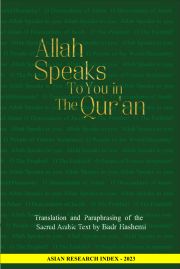Home > Allah Speaks to you in the Quran
Allah Speaks to you in the Quran
Book Informaton
Access Options
Citation Options
Download CitationShowing 1 to 20 of 127 entries
| Chapters/Headings | Author(s) | Pages | Info |
4 | |||
8 | |||
9 | |||
11 | |||
12 | |||
14 | |||
19 | |||
20 | |||
21 | |||
27 | |||
2 | |||
49 | |||
76 | |||
103 | |||
123 | |||
149 | |||
177 | |||
188 | |||
208 | |||
222 | |||
| Chapters/Headings | Author(s) | Pages | Info |
Showing 1 to 20 of 127 entries
Topics



